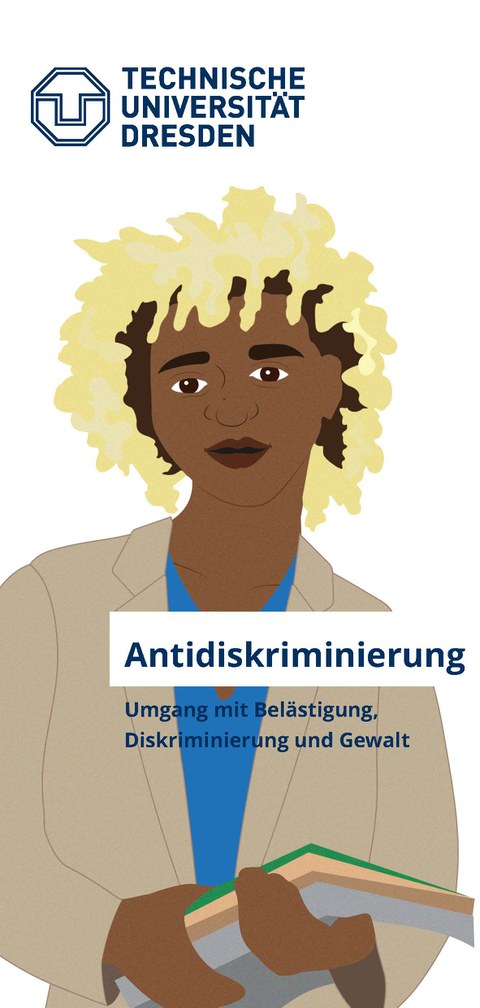Materialien im Rahmen der Antidiskrimierungsarbeit
Culturebeitrag 03/23: Nachgefragt bei Anja Wiede
Interview mit dem Zentrum für Weiterbildung: Diskriminierung sichtbar machen
Haltung - ein Podcast zur Antidiskriminierung
Haltung - ein Podcast zur Antidiskriminierung
Im Podcast tauschen sich unterschiedliche Gesprächspartner:innen über Aspekte von gruppenbezogener Menschenfeindlichkeit und deren Relevanz für den Hochschulalltag der TU Dresden aus.
Weitere Informationen erhalten Sie hier.
Weiterbildungsmöglichkeiten
Zentrum für Weiterbildung
Hier erhalten Sie einen Überblick über aktuelle Weiterbildungsangebote und Förderprograme im Themenfeld Diversity/ Antidiskriminierung
Zertifikatsprogramm Diversity: Vielfalt im Fokus
Erweitern Sie Ihr Verständnis für Vielfalt, Gleichheit und Inklusion mit unserem Zertifikatsprogramm! Sie lernen, Vorurteile und Stereotypen zu erkennen und zu hinterfragen, erhalten wertvolle Werkzeuge für respektvolle Kommunikation und entwickeln ein tiefes Bewusstsein für strukturelle Benachteiligungen und diskriminierende Praktiken.
E-Learning: Unconscious Bias
benötigte Lernzeit: 10 Minuten
E-Learning: Biases im Bewerbungsgespräch
benötigte Lernzeit: 15 Minuten
Toolbox Unconscious Bias
Die Toolbox bietet hilfreiche und interessante Informationen sowie Impulse in Form von Linksammlungen auf Videos und weitere (Lern-)Angebote.
Diversity@Lehre
Selbstlernangebote und nützliche Informationen und Links rund um das Thema Diversitätsgerechte Lehre.
E-Learning: Fit für die Gleichbehandlung
Angebot des Fortbildungszentrums Meissen (FoBiZ)
Unbewusste Vorurteile (Anti-Bias) erkennen
Was sind unbewusste Vorurteile? © FUMA Fachstelle Gender & Diversität NRW
Diskriminierung kann u.A. aus sogenannten unbewussten Vorurteilen resultieren. Diese hängen mit Stereotypen zusammen und stehen in direktem Zusammenhang mit sozialen Diskriminierungsprozessen. Sie beeinflussen, wie wir urteilen, Entscheidungen treffen und letztendlich handeln.
Informationsmaterialien
Die Beschwerdestelle verfügt über eine ausführliche Literaturliste zu einschlägigen Themen der Antidiskriminierungsarbeit. Sollten Sie an dieser Interesse haben, fragen Sie an.
Gern übersenden wir Ihnen auf Anfrage verschiedene Materialien zur Antidiskriminierungsarbeit an der TU Dresden. Dies können Informationsflyer zur Antidiskriminierung sein, Strategiepapiere oder Materialien externer Kooperationspartner:innen, wie Beratungsstellen.


